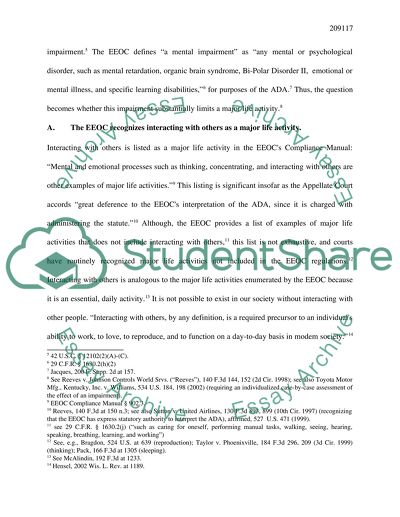Cite this document
(“How EEOC and rehabilitation act define interacting with others as a Essay”, n.d.)
Retrieved from https://studentshare.org/miscellaneous/1523108-how-eeoc-and-rehabilitation-act-define-interacting-with-others-as-a-major-life-activity-under-the-americans-with-disability-act-how-supreme-court-precedent-def
Retrieved from https://studentshare.org/miscellaneous/1523108-how-eeoc-and-rehabilitation-act-define-interacting-with-others-as-a-major-life-activity-under-the-americans-with-disability-act-how-supreme-court-precedent-def
(How EEOC and Rehabilitation Act Define Interacting With Others As a Essay)
https://studentshare.org/miscellaneous/1523108-how-eeoc-and-rehabilitation-act-define-interacting-with-others-as-a-major-life-activity-under-the-americans-with-disability-act-how-supreme-court-precedent-def.
https://studentshare.org/miscellaneous/1523108-how-eeoc-and-rehabilitation-act-define-interacting-with-others-as-a-major-life-activity-under-the-americans-with-disability-act-how-supreme-court-precedent-def.
“How EEOC and Rehabilitation Act Define Interacting With Others As a Essay”, n.d. https://studentshare.org/miscellaneous/1523108-how-eeoc-and-rehabilitation-act-define-interacting-with-others-as-a-major-life-activity-under-the-americans-with-disability-act-how-supreme-court-precedent-def.


